New data from StatCounter, a web traffic analysis firm, suggests that the Windows 7 market share increased to 9.61% from 0.88%, particularly in Asia. When you expect Windows 11 adoption to double ahead of Windows 10 EOL, we have a wild report claiming Windows 7 usage is surging, but that’s NOT true. This is a reporting error.
Before I explain how the numbers are misleading and Windows 7 is losing users, not gaining, we need to understand what StatCounter is and how it works. As per the StatCounter website, they’re a “simple but powerful real-time web analytics service,” similar to Google Analytics.
To use StatCounter, websites install its tracking code. Right now, StatCounter numbers, including Windows 7 market share, are calculated by aggregating billions of page views recorded each month from its tracking code installed on 1.5M+ websites.
When you visit a webpage that uses StatCounter, it reads your browser’s user agent. User-agent string tells if your device is on Windows 11 or 7, or if it’s another form factor, such as Android or iOS.
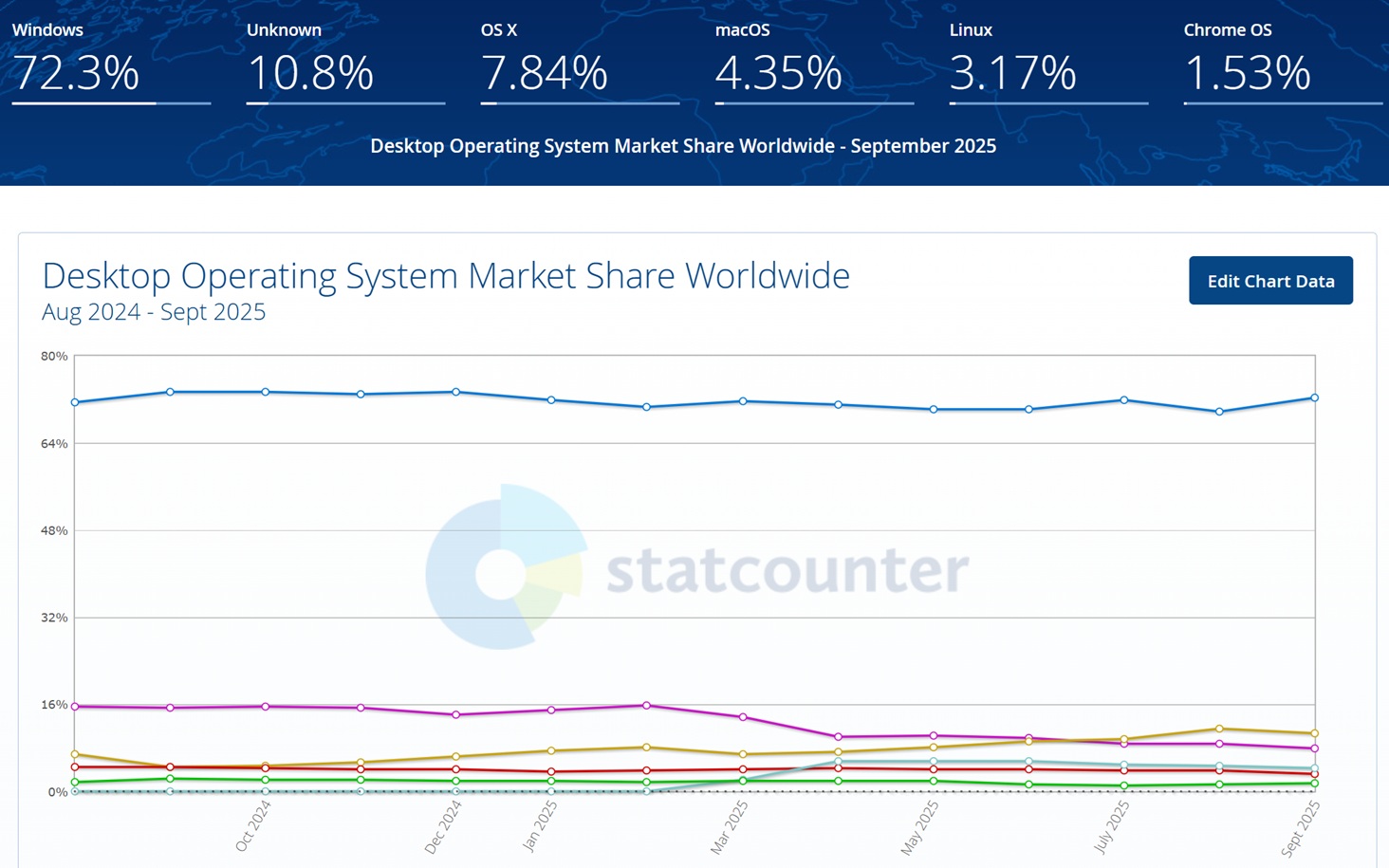
StatCounter takes all these anonymous metrics into account and then displays each OS’s share as its page-view count divided by the total page views for the chosen time and region, publicly.
But the internet is no longer the same. The AI bots and crawlers often inflate the numbers, which are removed or corrected by StatCounter over time.
“We remove bot activity and make a small adjustment to our browser stats for prerendering in Google Chrome. Aside from those adjustments, we publish the data as we record it,” StatCounter noted in its document.
Windows 7’s surge in usage is a reporting error and we’ve reasons to refute the claim
Over the past 24 hours, many have been surprised because the market share report shows Windows 7’s market share has suddenly surged.
On the 1st of October, StatCounter published September 2025 numbers, including for the Windows version market share. In older reports, Windows 7 share was just 0.88% in July, but it increased to 3.35% in August. In September, suddenly, numbers jumped to 9.61%, while Windows 11 sits at 48.94% and Windows 10 is 40.5%.
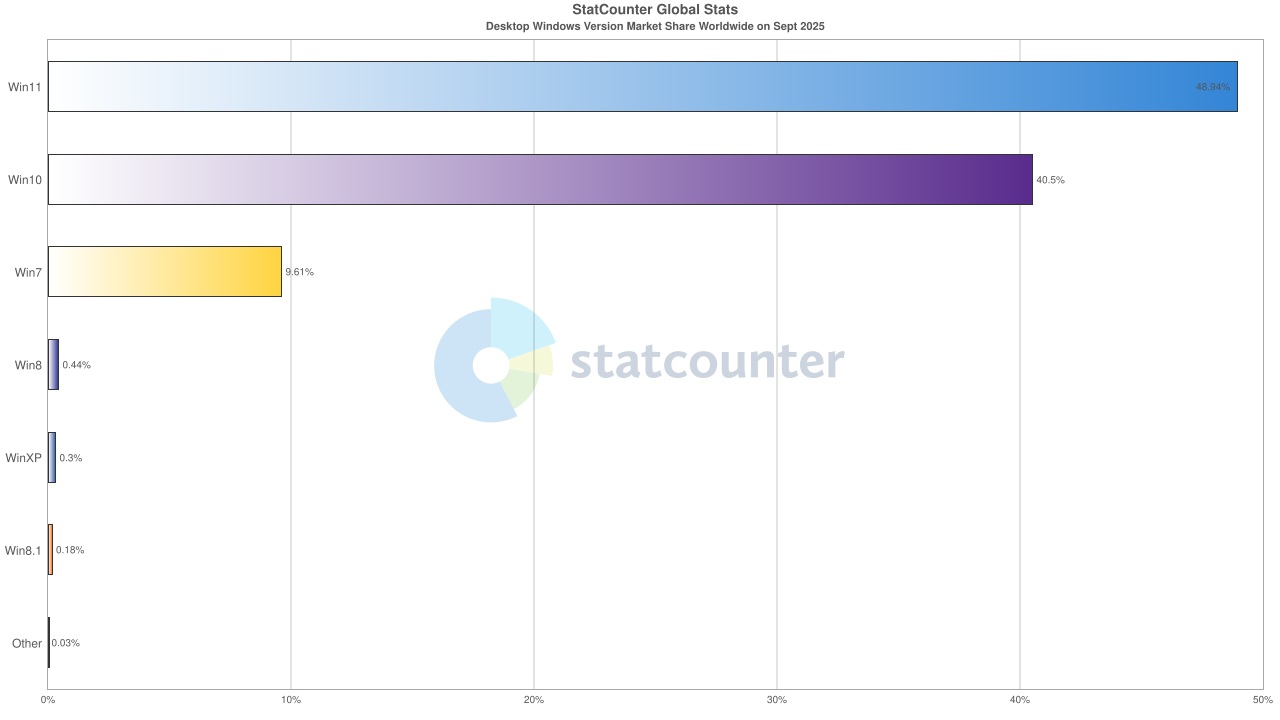
Windows 7 share almost tripled in a month (186%), and that too when it’s almost rocket science for a casual user to find and install the OS on new hardware.
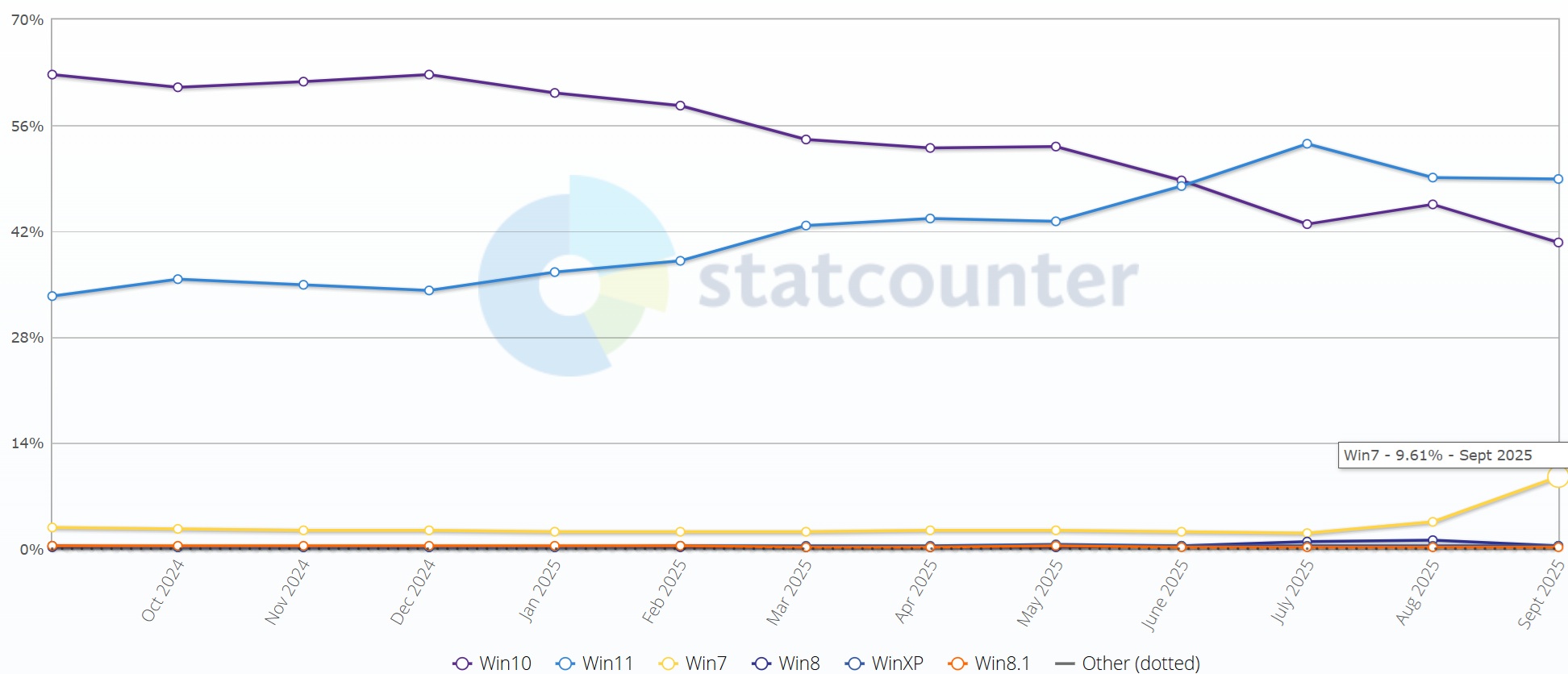
What might have caused Windows 7’s surge in these market share reports?
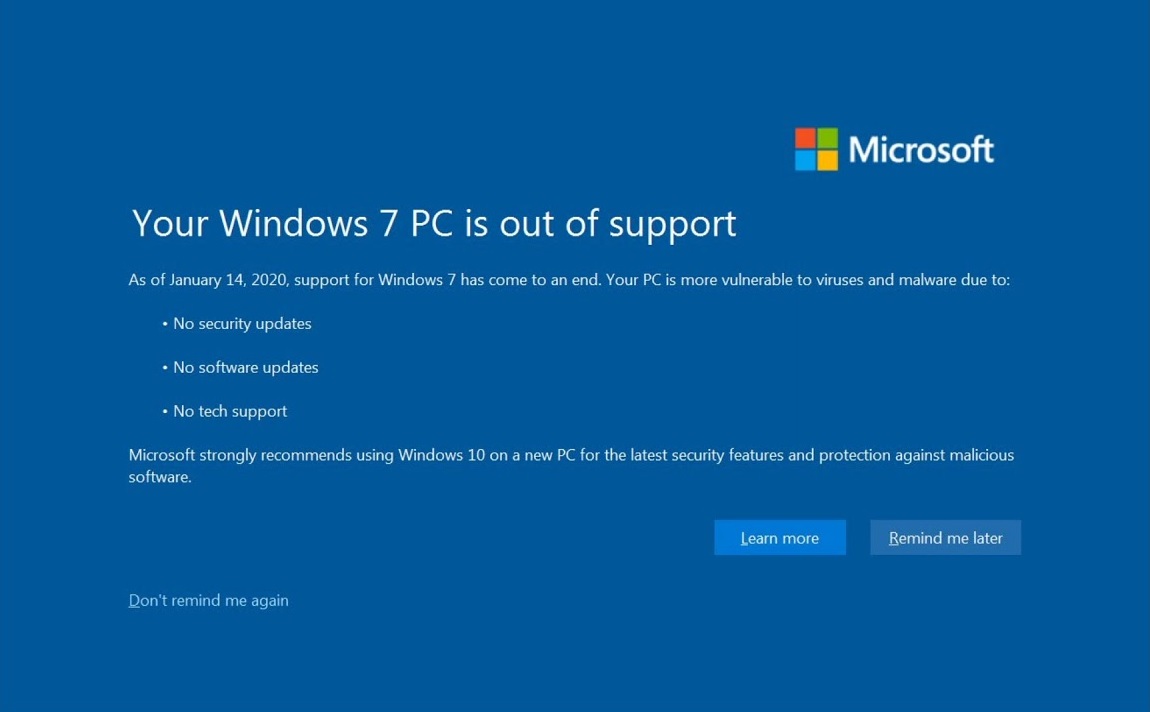
The reality is that StatCounter is incorrectly reporting a Windows 7 surge, likely due to a regression in OS detection triggered by Chromium’s User-Agent reduction. It could be the data mislabeling ambiguous Windows as “Win7.” Or it’s possible some new crawlers spoof Windows NT 6.1 or old IE/Chrome tokens.
Remember that Statcounter counts website pageviews, not actual OS installations.
This is a very important factor that most people don’t realise, so if a large bot operation entered the sample of Windows 7, if new sites were added or removed, or extensions/VPNs/browsers spoofed the Windows 7 user agent, we might have these inflated numbers as the net result.
It’s practically impossible for Windows 7 to surge.
Where do you find a Windows 7 ISO in 2025? How do you use it when most new games, drivers, or apps don’t run properly on the decades-old operating system? I couldn’t even manage to install Windows 10 on my Spectre because drivers were strictly locked to Windows 11. Now, imagine trying to install Windows 7.
From Nvidia to Steam, nearly all companies have pulled support for Windows 7. Only Mozilla is supporting Windows 7 holdouts with extended Firefox updates.
I don’t believe thousands of users would wake up one day and go back to using Windows 7 because it’s nostalgia Monday.
StatCounter showed Google is losing market share in 2024, but it was a reporting glitch
In May 2024, StatCounter incorrectly reported that Google’s search engine share dropped to 77.52% from 86.94% in the previous month.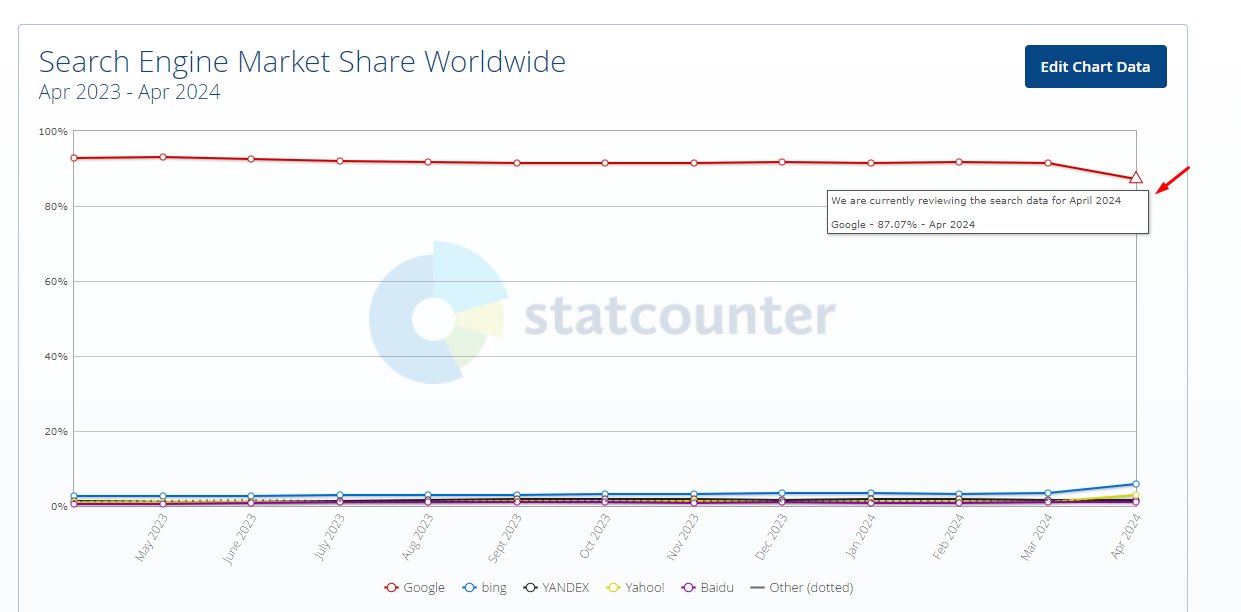
Some people fell for the error and attributed the dramatic drop to ChatGPT’s popularity, but that was not the case. SimilarWeb, another analytics firm, could not verify the sudden decline in Google’s share. According to the company, Google’s share largely remained the same. Later, StatCounter quietly corrected the data, and Google went back to 87%.
We’re seeing the repeat of the incident with Windows 7. I wouldn’t be surprised if StatCounter corrects it in the next few days. While StatCounter is mostly accurate with its numbers, it has no control over the data it receives and errors like these can affect any analytics firm.
Windows 7’s real market share is likely less than two percent in 2025.
The post No, Windows 7 isn’t gaining market share in 2025 appeared first on Windows Latest
